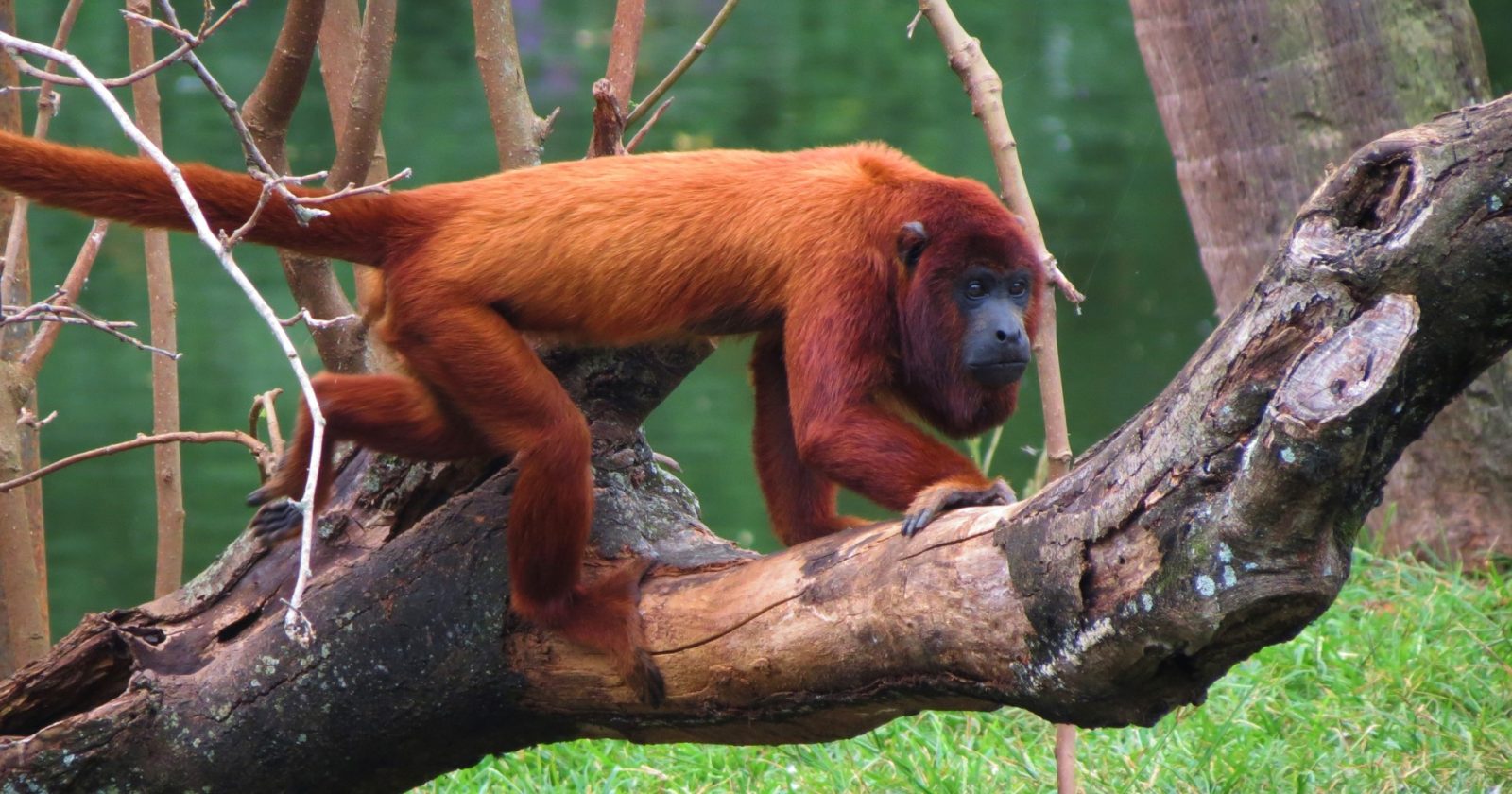
Columbian red howler monkey
 The Colombian red howler or Venezuelan red howler is a South American species of howler monkey, a type of New World monkey, found in the western Amazon Basin in Venezuela, Colombia, Ecuador, Peru and Brazil (see to the right). The population in the Santa Cruz Department in Bolivia was split off as a separate species, the Bolivian red howler, in 1986, and more recently, splitting off the population in north-eastern South America and Trinidad as the Guyanan red howler has occurred.
The Colombian red howler or Venezuelan red howler is a South American species of howler monkey, a type of New World monkey, found in the western Amazon Basin in Venezuela, Colombia, Ecuador, Peru and Brazil (see to the right). The population in the Santa Cruz Department in Bolivia was split off as a separate species, the Bolivian red howler, in 1986, and more recently, splitting off the population in north-eastern South America and Trinidad as the Guyanan red howler has occurred.
There is significant sexual dimorphism, with males bigger than females.
They are active during the day (diurnal), and like most primates, is almost exclusively arboreal (living high in the trees). It prefers to walk on all four limbs, while using its tail as a prehensile fifth limb, wrapping it around branches as an extra safety line. Oddly, it does less leaping than almost any other monkey species.
Living in groups between 3-9 (most are between 5-7), there is a single dominant male, which is in charge of where they go (for food) and defending the group from rivals. Females are in charge of child rearing.
These howlers are famous for their “dawn chorus”, which consist of a mix of roars and howls, and can be heard up to 5 km away in the forest, and make their presence known in the area. This is to avoid fights, which are both bad for physical damage, and the wasted energy, which because of their diet is something they cannot afford. The calls also help in the scattering of the groups and lessens the competition over food.
While they mostly eat leaves (folivores), they are required to eat other things like nuts, small animals, fruits, seeds, and flowers for important nutrients.
Once considered to have 2 subspecies, both the Ursine howler and the Jurua howler have been upgraded to separate species status.
They are considered Least Concern, though in Peru there are areas where they have become locally extinct. They are found in many of the national parks within their range, and so are currently not remotely at risk of extinction, though it is still good to try to see them if you are in an area where they live, as this raises their value in the eyes of the people that live around them.